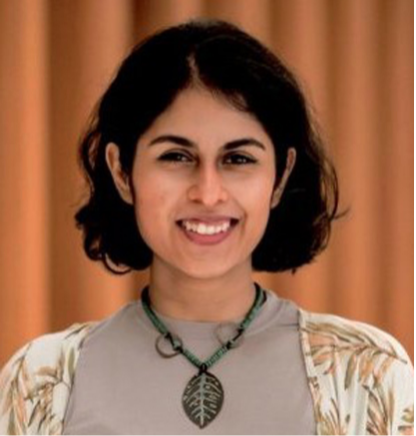
India’s prolific STEM talent has become an established trope, ever since the millennium bug first catapulted the country into an IT powerhouse in the late 1990s. Today, Indians are at the helm of some of the world’s biggest tech and hardware giants, including Google, YouTube, Microsoft, IBM, and Nokia. In 2021, 34 percent of Indian graduates were in STEM, with the country producing the largest STEM workforce in the world. On the occasion of International Girls in ICT Day, it is apropos to celebrate the upsurge in women’s enrolment in STEM which, while still not at parity, now stands at 43.2 percent, one of the highest in the world.
Yet, curiously, of all the women that graduate with STEM degrees, only 29 percent join the workforce. And as astute readers would have already noticed, of the many Indian tech CEOs, women CEOs are the rarest. Enrolment numbers clearly show that STEM is not a ‘masculine’ field, so where are the women? Previous ORF analyses have documented some of the barriers at every stage: Intrusive interview questions, a hostile work environment, biased performance evaluations, and social pressures to leave the workforce upon marriage. Can women avoid these walled gardens by starting their own ventures? It’s an uphill battle still: Women-run startups are less likely to attract investments, industry networks are steeped in “bro culture”, and “the most important career choice that women make is who they choose to marry”. Anecdotally, last year, ORF organised a startup-focused programme on the sidelines of CyFy, our annual tech conference, and upon approaching incubators with a request for gender parity among speakers/mentors, were told summarily that that would be impossible.
Previous ORF analyses have documented some of the barriers at every stage: Intrusive interview questions, a hostile work environment, biased performance evaluations, and social pressures to leave the workforce upon marriage.
Enter AI?
AI is a tool, but it is equally a mirror, reflecting our biases and flaws at us. Machines do not make excuses: “It is entirely possible for algorithms to discriminate on gender, even when they are programmed to be “blind” to that variable.” They can identify stark biases in recruitment, hiring, and performance evaluations.
Some foundational—often overlooked—jobs in AI, such as data labelling, are providing opportunities for young women looking for supplemental income. With India having emerged as a data labelling hub, firms like Playment and iMerit are touting their unique positioning in giving women both flexibility in work hours and locations and skills they can build to jump to other careers in the AI space. Looking over the horizon, some analysts see AI and automation as a great leveller: “20% of women employed today could see their job displaced by automation by 2030, compared with 21% of men” but “20% more women could be employed by 2030 than are today—versus 19% more men”.
We are also already seeing the positive benefits of AI in the more ‘banal’ aspects of our lives. Social media can, for instance, be empowering for women. Algorithms bring us together, create a sense of community, and amplify rallying calls around common causes. Social media platforms also provide opportunities for women entrepreneurs and small businesses to reach a wider audience and thrive through online engagement. We have witnessed the rise of brilliant women content creators on platforms like Instagram and YouTube, amongst others, who are using their voices to challenge norms, share their experiences, and inspire others.
Looking over the horizon, some analysts see AI and automation as a great leveller: “20% of women employed today could see their job displaced by automation by 2030, compared with 21% of men” but “20% more women could be employed by 2030 than are today—versus 19% more men”.
There are other creative ways to leverage AI as well: AI-powered platforms can facilitate networking and mentorship opportunities for women in STEM. Glass ceilings cannot be broken alone. By connecting women with mentors, peers, and industry professionals, AI can help create a supportive ecosystem that fosters career growth and advancement.
AI does not herald a single, straightforward, rosy future. Gender parity cannot be achieved through gender-blind approaches. Gig work, while affording flexibility, does not solve for job security. Within online spaces, women are still disproportionately subject to unwelcome advances, harassment, outright threats of violence and subtle, insidious sexism. And any number of women-focused platforms should not distract from the fact that women’s representation in STEM should not be a corporate social responsibility checkbox or an issue that is somehow ancillary to the growth of a company.
The path to parity involves creating a culture of diversity and inclusion within the tech industry, where women and underrepresented groups have a seat at the table and their voices are heard in decision-making processes. While women have to advocate for themselves and other women, our male colleagues should not see themselves as irrelevant in this regard.
Within online spaces, women are still disproportionately subject to unwelcome advances, harassment, outright threats of violence and subtle, insidious sexism.
And yes, there is a difference between speaking at women (at all-male panels talking about the importance of women’s representation) versus an honest conversation on how things can be made meaningfully better.
Trisha Ray is Deputy Director at the Centre for Security, Strategy and Technology, Observer Research Foundation
The views expressed above belong to the author(s). ORF research and analyses now available on Telegram! Click here to access our curated content — blogs, longforms and interviews.




 PREV
PREV



